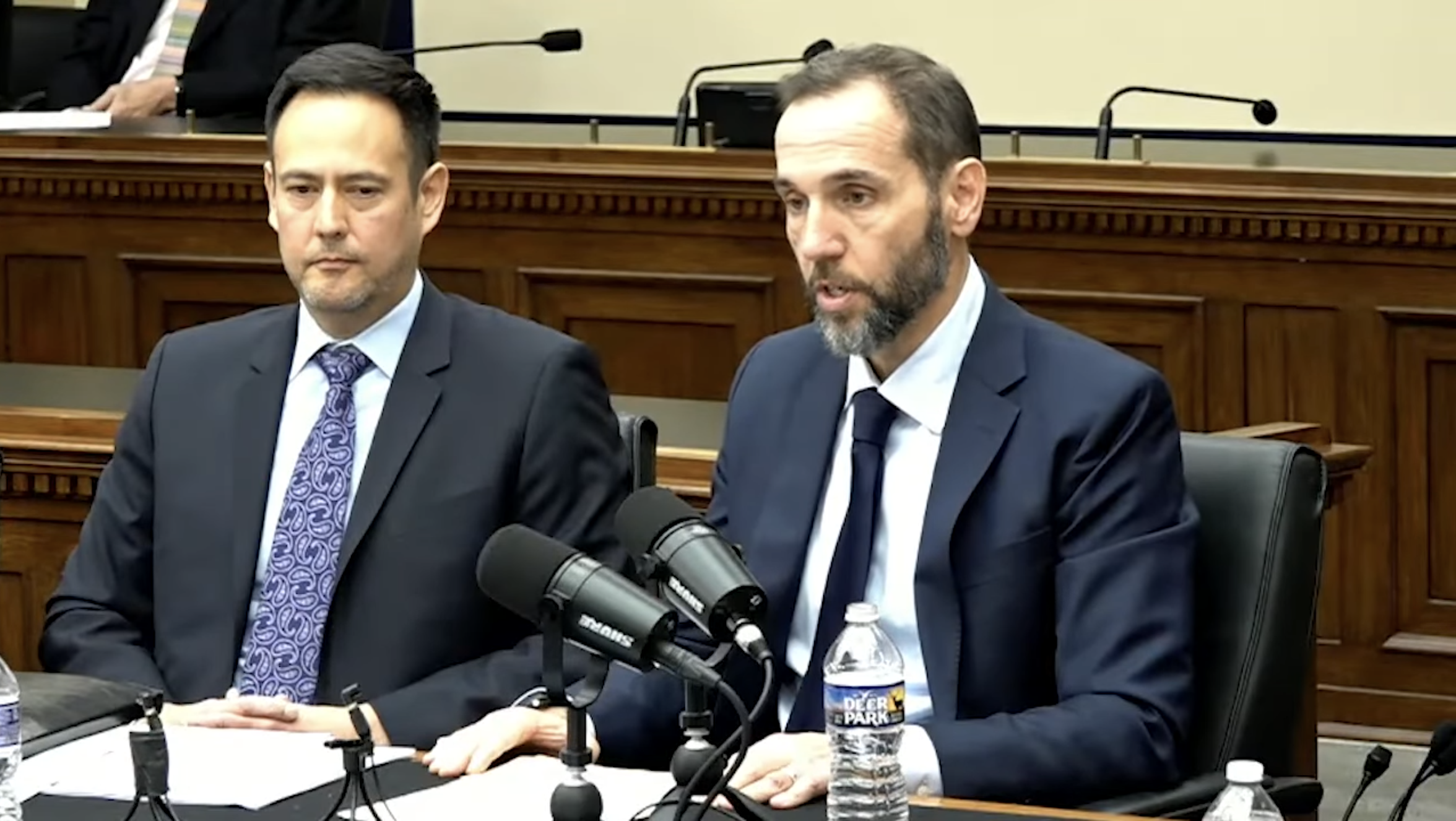Congress Should Think Twice Before Expanding the Intelligence Identities Protection Act
In 1975, Philip Agee, a former CIA case officer who claimed he had become disillusioned with the CIA’s support for right-wing dictators in Central and South America, published “Inside the Company,” a tell-all memoir of his service, which included an appendix naming 250 alleged CIA officers, agents and informants. Agee also founded a magazine called “CounterSpy,” which advocated outing clandestine CIA officers.

Published by The Lawfare Institute
in Cooperation With

In 1975, Philip Agee, a former CIA case officer who claimed he had become disillusioned with the CIA’s support for right-wing dictators in Central and South America, published “Inside the Company,” a tell-all memoir of his service, which included an appendix naming 250 alleged CIA officers, agents and informants. Agee also founded a magazine called “CounterSpy,” which advocated outing clandestine CIA officers.
Critics decried Agee, particularly after the 1975 assassination of Richard Welch, the CIA station chief in Greece, by a left-wing terrorist organization. Though there was some dispute as to whether Agee’s activities led to Welch’s murder, outrage over the killing prompted Congress to pass the Intelligence Identities Protection Act (IIPA) of 1982, which made disclosing the identities of U.S. “covert agents” its own federal crime.
The initial bill was controversial, particularly because of a provision that would have attached criminal penalties to disclosure of this information even by non-government employees, including journalists. Eventually, Congress reached a compromise: The final legislation only criminalized disclosures that would put U.S. covert agents in physical danger or legal jeopardy overseas, and it applied only to non-government employees who engaged in a “pattern of activities” to out clandestine intelligence officers, employees, agents or informants.
The law has been rarely used, with only two exceptions. One was the leak prosecution of John Kiriakou, who pleaded no contest to disclosing the identity of a covert agent to a journalist. The other was Sharon Scranage, a CIA clerk who pleaded guilty to disclosing identities to Ghanaian intelligence. The statute was amended in 1999 to cover retired officers or employees whose identities remain classified, and its penalties have been increased, but its text has otherwise remained largely unchanged since it was first passed.
Now, the New York Times reports that a new amendment is on the table. The CIA recently tucked a provision into the House and Senate intelligence authorization bills that would expand the definition of “covert agent” under the IIPA—with little discussion by Congress. The intelligence authorization act was included in the Senate’s National Defense Authorization Act, which passed in late June, and the House is currently considering its intelligence authorization bill as a stand-alone measure. The House is set to vote on its bill at noon on July 16.
Congress should deliberate at length on the wisdom of this change, rather than fast-tracking the measure as it seems ready to do.
Though the specific change is somewhat complicated, the bottom line is that it removes the requirement that the law applies only to cases where disclosure would put officers and agents at risk of physical harm or legal jeopardy, or where there would be a significant impact on legitimate intelligence activities. As written, the law defines “covert agents” narrowly to require some nexus to an overseas posting (for CIA employees or officers) or residency overseas at the time of the disclosure (for nonemployee U.S. citizen agents and informants).
Currently, the definition of “covert agent” in the IIPA, codified now at 50 U.S.C. § 3126(4) and until recently at 50 U.S.C. § 421, covers three classes of people. The first class includes present or retired officers or employees of an intelligence agency—or present or retired service members assigned to duty with an intelligence agency—whose identity as such an officer, employee or service member is classified information and who is serving or has served overseas in the past five years. The second class includes nonemployee U.S. citizens with a classified intelligence relationship with the United States who reside and act overseas as agents of, or informants or sources of operational assistance to, an intelligence agency. This also includes FBI counterintelligence or counterterrorism agents or informants in the United States.And finally, the third class includes noncitizens with a classified intelligence relationship to the United States who are present or former agents, informants or sources of operational assistance to an intelligence agency.
The expansion proposed by the CIA would eliminate the overseas posting or residency requirements in the first two classes of “covert agents.” In other words, the proposal would criminalize the disclosure of the identity of government employees or officers in perpetuity, so long as the relevant agency keeps the identity of the covert agent classified. So, the agency could maintain the classified identity of a member of the clandestine service—those who often work overseas recruiting and managing spies—and the change would criminalize the disclosure of that person’s identity even if he or she hasn’t been posted overseas for years (or has retired). And it would criminalize the disclosure of government informants and agents in the United States. In both cases, it would do so where the risk of physical or legal jeopardy for the officers or agents, or their families, is minimal.
This cuts against Congress’s original intent in including those overseas posting or residency requirements. In a report from the House Intelligence Committee in 1981, H.R. 97-221, the committee explained that the overseas nexus was included expressly to limit the scope of the law to the disclosure of identities “which it is absolutely necessary to protect for reasons of imminent danger to life or significant interference with legitimate and vital intelligence activities.” Indeed, the committee also recognized that occasionally there will be public interest in the identities of covert agents. In explaining why the restrictions on disclosure of identities of the second class of “covert agent”—that is, U.S. citizen agents and informants—is limited to those who are overseas, the committee explained that “the physical danger element is much less” when they are present in the United States. “Furthermore,” the committee explained, “U.S. citizens residing within the U.S. who assist intelligence agencies may be employees of colleges, churches, the media, or political organizations. The degree of involvement of these groups with intelligence agencies is a legitimate subject of national debate and intra-group discourse.”
Interestingly, then-Senator Joe Biden was one of only four senators to vote against the IIPA on final passage in 1982. Biden explained in an op-ed his primary concern that the intent standard was too lax. He also, however, made a compelling argument that sometimes public disclosure of covert agents’ identities is in the public interest, both when intelligence agencies have overstepped and when disclosure is in the best interest of the agency (if a reporter discovers a mole, for instance). The original legislation was narrowly crafted to get at only those cases where a covert agent would be at physical or legal risk from disclosure; today’s proposed revision, however, would impose a blanket restriction on disclosure, irrespective of the considerations noted by Biden.
While there are deep ethical considerations for the news media when it comes to “naming names” of covert operatives, there are also cases where a conscientious reporter or news outlet can make the call that doing so is in the public interest. For instance, in 2015, the New York Times published the names of three senior CIA officials under classified cover as part of a comprehensive report on CIA drone strikes. The CIA, and 20 former CIA officials, cited the IIPA in criticizing the decision and then Office of the Director of National Intelligence General Counsel Bob Litt said the Times had “disgraced” itself. Eventually, the Times made its case for disclosure to Lawfare’s Jack Goldsmith. Executive Editor Dean Baquet argued that because the three men had significant responsibility over an operation of a sort typically conducted by the military (where the IIPA would otherwise not apply), and because they were well known as CIA officers in the countries in which they had been stationed, the balance tipped in favor of disclosure.
Here, the Times made the call that public interest in the identities of the three men was high and the risks posed by disclosure were relatively low. Under the existing IIPA, the law’s coverage of the identities of the three CIA employees would “time out” after five years of their return to the United States from an overseas posting, even if they remained under cover. It isn’t clear whether the five year time-out was at issue in this case, but the incident illustrates the debate over newsworthiness of the identities of officials and employees under classified cover. It also illustrates the effect that the proposed expansion of the IIPA would have: Under the amendment, a government employee who shared the identities of the three men with the Times would be subject to criminal sanction.
The CIA argues that the expansion is necessary because the risks to covert agents are “evolving” and no longer threaten only agents serving overseas. Without offering specifics, the CIA’s written justification to Congress cites two types of threats.
First, the agency notes the “lengths organizations such as WikiLeaks are willing to go to obtain and release sensitive national security information.” This statement suggests that the CIA wants this expansion in order to more broadly allow the prosecution of people outside government who have shared information, rather than of individuals with authorized access to classified information. This should heighten the concern for press freedom advocates.
Additionally, the original IIPA was narrowly drafted to cover the Agee scenario: a rogue former agent who sets out specifically to identify covert agents. It was not a law to criminalize broadly the “release” of “sensitive national security information.” The Espionage Act is the main provision to deal with the disclosure of classified information, and the CIA has not articulated why that is insufficient to deal with serious breaches of government secrecy with real consequences for national security.
Second, the CIA cites cyber threats against undercover officers as another reason to remove the overseas posting requirement. That’s a fair point. It is true that modern telecommunications services pose unique and evolving dangers for law enforcement, the intelligence community and the military. That said, the CIA has yet to make a compelling and specific case as to why such a sweeping expansion is necessary in light of cybersecurity developments, and it has not come close to doing so. Congress also needs to carefully consider the point and, if amendments are necessary, draft them with care.
Notably, the CIA’s written justification for the change specifically cites to the Rendition, Detention, and Interrogation (RDI) program in asking for the expansion. This prompts several questions. Does the CIA have senior officials who were involved in the RDI program in the early aughts but who have long since returned to the United States, whose identities this expansion of the IIPA would shield from disclosure? Here, too, Congress has a responsibility to ask questions about what the agency has in mind, and why, rather than speeding the amendment through.
Finally, it is important to acknowledge that the bill would still retain certain safeguards for the press. In particular, the legislation retains a higher intent requirement for non-government employees. To prosecute a member of the news media for the disclosure of a covert agent, the government would still have to prove that he or she acted in “the course of a pattern of activities intended to identify and expose covert agents and with reason to believe that such activities would impair or impede the foreign intelligence activities of the United States.”There are indications in the legislative history that a pattern of activities would not encompass news reporting “of intelligence failures or abuses.” That said, the legislative history also confirms that Congress intended the law to cover even an isolated disclosure so long as it was part of a pattern of activities leading up to the disclosure—which raises concerns that an aggressive prosecutor could argue that the acts involved in national security or investigative reporting—cultivating sources and seeking to uncover, receive and publish classified information—could constitute the requisite “pattern of activities.” Might the government be able to apply that argument to the reporting of the 2015 New York Times story, for example?
The IIPA as it stands now was the result of six years of congressional deliberation: Congress took up the precursor to the present law in 1976, the year after Welch was killed, and the bill passed only in 1982 following significant compromise and debate. In contrast, this current proposed expansion has been public only for a few weeks.
Congress needs to consider this expansion in the law with significant deliberation. The CIA does need to use classified cover to do its work—but such secrecy can also shield intelligence agencies from accountability in the press. And when disclosure poses a relatively low risk to the covert agent but is crucial to an informed citizenry, criminal laws that chill or punish such disclosures do a disservice both to sound public policy and to the public itself.




_c.jpg?sfvrsn=9bbcc085_3)
